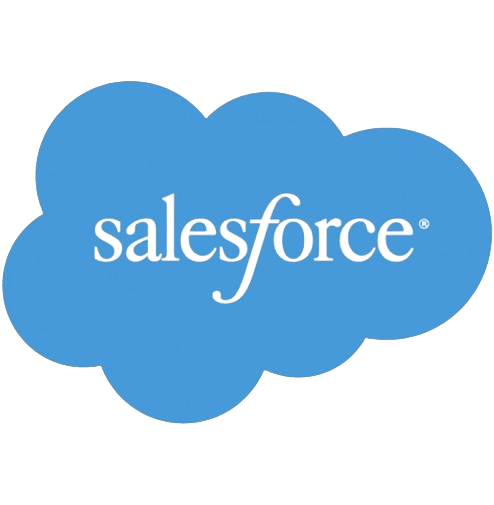8 Steps to Successful Salesforce Implementation
While Salesforce remains one of the leading CRM platforms globally, it’s essential to acknowledge Salesforce implementation can be a highly intricate process, often challenging even the most seasoned teams.
CRM implementation projects are notorious for their failure rates, which can range from 30% to 70%.
However, you possess the capability to ensure the success of your salesforce implementation and deployment. The success of your CRM implementation project is influenced by your approach to planning, execution, and training.
To undertake a Salesforce implementation effectively, enterprises should engage in meticulous planning, invest in the right partner(s), and prioritize the needs and concerns of end-users during the change management process. Including all affected employees in the planning and rollout phases will significantly enhance the prospects of achieving a successful Salesforce implementation.
8-step framework to follow to help support a successful Salesforce implementation project
1. Identify your needs from Salesforce.
In the process of implementing Salesforce, it’s crucial to begin by engaging each department within your organization. Request that they provide a comprehensive list of their specific responsibilities, recurring tasks, sales processes, and workflows. By gathering this information, you gain valuable insights into the unique needs and challenges faced by each department.
This data serves as the foundation for tailoring Salesforce to meet these specific requirements effectively. It allows you to pinpoint areas where Salesforce can bring significant benefits and streamline operations. By aligning Salesforce with the identified needs and objectives of each department, you maximize its potential as a versatile and valuable tool for your organization’s overall success.
2. Get your Budget Sorted
When embarking on a Salesforce implementation, it’s essential to recognize that costs can vary significantly. Your strategy should be closely aligned with your budget. Once you’ve clarified your objectives for Salesforce, the next step involves researching and understanding the various expenses associated with the implementation. Here are some common cost factors to consider:
- Salesforce Licenses: The cost of Salesforce licenses can vary depending on the specific features and user types you require.
- Salesforce Consulting: Engaging Salesforce consultants can help you plan and execute your implementation effectively. Their fees depend on the scope of their services.
- Implementation Partner: If you choose to work with an implementation partner, their fees will also vary based on the complexity and scale of the project.
- Data Migration: Moving existing data into Salesforce may involve costs, especially if you need to clean, transform, or migrate large volumes of data.
- Integrations: If you plan to integrate Salesforce with other systems, consider the development and maintenance costs of these integrations.
- Salesforce Training: Training your team on how to use Salesforce effectively is crucial. Costs may include training materials and instructors.
- Salesforce Adoption: Promoting user adoption through change management and engagement initiatives can incur additional expenses.
- IT Maintenance: Ongoing IT maintenance to ensure the stability and performance of your Salesforce instance may be necessary.
- End-User Support: Providing support and troubleshooting for end-users can also be a cost factor.
Understanding these expenses and aligning them with your budget is essential for a successful Salesforce implementation strategy. It’s crucial to balance your objectives with your available resources to maximize the return on investment from your Salesforce implementation.
3. Find your perfect Salesforce Implementation Partner
Choosing the right Salesforce implementation partner is crucial for success. These partners not only excel in Salesforce but also bring industry-specific knowledge to the table. It’s essential to seek a partner with a track record of implementing solutions for organizations similar in size and operating within your industry. Their industry expertise ensures that they can tailor Salesforce to meet your specific needs, leveraging insights gained from past projects within your sector for a more effective implementation.
To learn how to find your perfect partner – Read this guide.
4. Plan your organizational change management strategy
Ensuring a smooth transition to a new CRM can be challenging, but it falls on your shoulders to facilitate your workforce’s adjustment to the system. To maximize the chances of success, investing in a robust organizational change management strategy is imperative.
Begin by proactively soliciting employee feedback through surveys and establishing a mechanism for them to ask questions and provide input right at the outset of the implementation process. To encourage candid responses, ensure this system maintains anonymity. With this valuable feedback in hand, craft a well-planned Salesforce implementation rollout and communication strategy.
5. Migrating to the New CRM
Migration means moving all your data to the new CRM. Data is one of the most important things on which you cannot compromise at all. Migrating data is more challenging than many organizations anticipate, particularly when they underestimate the skill and knowledge required to make the shift, so invest in an implementation partner with experience migrating data in an organization of your size to help you ensure the transition goes smoothly.
To learn more about successful data migration – Click here
6. Roll out features gradually
The extensive range of features that Salesforce provides is a key advantage of implementing this highly versatile CRM. However, this same abundance of features can overwhelm users and hinder Salesforce adoption within your team. To mitigate this, consider a phased approach to feature rollout, allowing employees to acclimate at a manageable pace.
Start by introducing a select set of elements and features to specific teams. Collect feedback and assess the initial rollout’s performance. Adjust your approach based on this feedback before proceeding to introduce additional tools or features in subsequent phases. This gradual approach promotes smoother learning and adoption of Salesforce within your organization.
7. Don’t forget Employee Training
Under no circumstances should you skimp on training. Salesforce comes with a steep learning curve, and if your employees lack adequate training and resources, you run the risk of lower adoption rates. Unless you have a well-established Learning & Development department with Salesforce expertise, think about involving an implementation partner for this aspect. Alongside professional training, ensure that your employees have access to additional resources for continuous learning and development.
8. The ongoing support & maintenance
The implementation of Salesforce is not a one-time event; it’s a continuous journey. Expect ongoing updates and changes, making CRM maintenance essential. Your Salesforce implementation partner can assist in establishing a maintenance plan for your organization. Additionally, it’s crucial to conduct regular reviews of your processes and workflows. This ensures that you can adapt and make necessary adjustments as your business evolves, aligning Salesforce with your changing needs and objectives to optimize its effectiveness.
Connect with our experts to learn more about smooth Salesforce Implementation.
Conclusion
In constructing your Salesforce implementation plan, it’s vital to recognize that your team’s engagement will ultimately determine the platform’s success. A whitepaper by Forrester regarding CRM Salesforce highlights a common issue: CRM deployments often fall short of expectations due to employee underutilization. This stems from a lack of understanding about the CRM’s value in its roles and insufficient training on its features.
To address this, invest in your employees as much as you invest in the CRM itself. Seek their input on what they want from the platform and how you can support them during the transition. Ensure they have the necessary resources and maintain open communication with leadership throughout the Salesforce implementation process.
Remember, a CRM is a dynamic system that empowers your team. Actively and regularly solicit employee feedback for continuous improvement, mitigating the challenge of low adoption rates that many implementations face.






